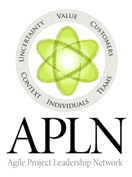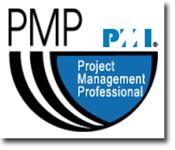 Last week Glen Alleman published a post called "The Role of Project Management". Glen has been exploring some of the concerns people have with the PMI and the PMP certification. He is challenging us to tell him what process groups and knowledge areas we should leave out. What should we NOT be doing that the PMI prescribes? If we think that the PMI has it wrong, what should we be doing differently?
Last week Glen Alleman published a post called "The Role of Project Management". Glen has been exploring some of the concerns people have with the PMI and the PMP certification. He is challenging us to tell him what process groups and knowledge areas we should leave out. What should we NOT be doing that the PMI prescribes? If we think that the PMI has it wrong, what should we be doing differently?
It dawned on me after reading his post that most Agile Practitioners I talk with don't really have much first hand knowledge of the PMI, the PMP, or the PMBOK. They know of these things through the people that they have worked with over the years. Quite a few folks I meet have had pretty bad experiences with PMP certified project managers and therefore think that it must be the PMI or the PMP that is making them bad.
For the sake of helping everyone rise to Glen's challenge, I have attached the PMI Process Groups, the Knowledge Areas, and as an added bonus, the Project Management Processes. My guess is that the Process Groups and Knowledge Areas are going to make the cut. What about the PM processes? Any low hanging fruit? Activity sequencing maybe? What about activity resource estimating? How about managing the team?
This is looking to be a pretty tough assignment.
PMI Process Groups
(these are the high level components of the process)
Initiating
Planning
Executing
Monitoring and Controlling
Closing
PMI Knowledge Areas
(these are the areas we are managing within the process groups)
Integration
Scope
Time
Cost
Quality
Human Resources
Communications
Risk
Procurement
PMI Project Management Processes
(these are the actual process prescribed in the PMBOK)
Develop project charter
Develop preliminary project scope statement
Develop project management plan
Scope planning
Scope definition
Create WBS
Activity definition
Activity sequencing
Activity resource estimating
Activity duration estimating
Schedule development
Cost estimating
Cost budgeting
Quality planning
Human resource planning
Communications planning
Risk management planning
Risk identification
Qualitative risk analysis
Quantitative risk analysis
Risk response planning
Plan purchases and acquisitions
Plan contracting
Direct and manage project execution
Perform quality assurance
Acquire project team
Develop project team
Information distribution
Request seller responses
Select sellers
Monitor and control project work
Integrated change control
Scope verification
Scope control
Schedule control
Cost control
Perform quality control
Manage project team
Performance reporting
Manage stakeholders
Risk monitoring and control
Contract administration
Close project
Contract closure
Check out this link just for fun: http://www.ibiblio.org/Dave/Dr-Fun/df200210/df20021001.jpg Subscribe to this blog


















